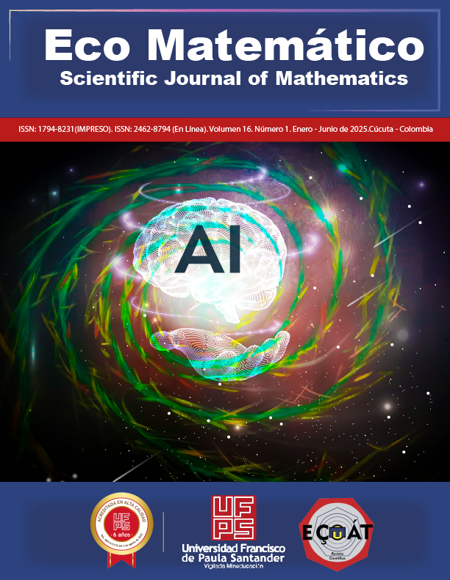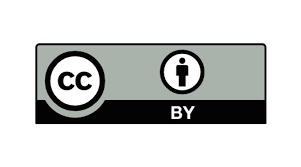Relationship between income and household waste classification in Colombia: insights from the 2022 National Quality of Life Survey
Relación entre ingresos y clasificación de los residuos domésticos de los hogares en Colombia, lo que nos dice la Encuesta Nacional de Calidad de Vida 2022
Main Article Content
The management of household waste is a significant public health issue. Higher-income households may have more resources to participate in recycling programs, access differentiated collection services, environmental education, and economic benefits from selling recyclable materials. However, they may also generate more waste due to higher consumption of goods and services, which can have a negative impact on the environment. A descriptive correlational quantitative study was conducted on the relationship between total household income and the classification of household waste. Data was collected from Chapter C: Household Services of the National Quality of Life Survey (ECV) 2022 by the National Administrative Department of Statistics (DANE). The ECV uses a probabilistic, multi-stage, stratified, and cluster sampling design, surveying 88 328 households. In Colombian households, 39.2 % report performing the appropriate classification of waste. Regarding income levels, 82.4 % of households have incomes below 2 minimum monthly legal wages (SMLMV), and plastics (31.6 %), paper and cardboard (31.0 %) are the mostly classified materials. Also, there is a significant statistical association indicating that higher income is related to better waste classification, and more than 50 % of the Colombian population does not perform effective classification of household solid waste. In conclusion, the main waste materials classified in Colombia are plastics, paper, cardboard, food scraps, and others.
Downloads
Publication Facts
Reviewer profiles N/A
Author statements
Indexed in
- Academic society
- Universidad Francisco de Paula Santander
- Publisher
- Universidad Francisco de Paula Santander
Article Details
Aragón, A., y Córdova, A.(2019). Separación de residuos inorgánicos reciclables en Tijuana. Revista Internacional de Contaminacion Ambiental, 35(4), 1011–1023. https://doi.org/10.20937/rica.2019.35.04.19
Bree, A. (2005). The organisation of waste management in the European Union member states. Journal for European Environmental & Planning Law, 2(6), 478–489. https://doi.org/10.1163/187601005x00471
Chioatto, E., Khan, M. A., y Sospiro, P. (2023). Sustainable solid waste management in the European Union: Four countries regional analysis. Sustainable Chemistry and Pharmacy, 33, 101037. https://doi.org/10.1016/j.scp.2023.101037
Departamento Administrativo Nacional de Estadística [DANE]. (2020). Cuenta ambiental y económica de flujos de materiales – residuos sólidos (CAEFM-RS) 2019 – 2020 provisional. https://www.dane.gov.co/files/operaciones/CAEFM-RS/bol-CAEFMRS-2021pr.pdf
Departamento Administrativo Nacional de Estadística [DANE]. (2022). Encuesta Nacional de Calidad de Vida - ECV 2022. https://www.dane.gov.co/
Departamento Administrativo Nacional de Estadística [DANE]. (2021). Glosario - ingresos y gastos. https://www.dane.gov.co/index.php/estadisticas-por-tema/pobreza-y-condiciones-de-vida/glosario-ingresos-y-gastos
Departamento Nacional de Planeación. (2022). Guía nacional para la adecuada separación de residuos sólidos. https://colaboracion.dnp.gov.co/CDT/Vivienda%20Agua%20y%20Desarrollo%20Urbano/Guia_Residuos%20Solidos_Digital.pdf
Giusti, L. (2009). A review of waste management practices and their impact on human health. Waste Management (New York, N.Y.), 29(8), 2227–2239. https://doi.org/10.1016/j.wasman.2009.03.028
Handayani, D., Gitaharie, B. Y., Yussac, R. N., y Rahmani, R. S. (2018). How does household characteristics influence their waste management? E3S Web of Conferences, 74, 06005. https://doi.org/10.1051/e3sconf/20187406005
Ministerio de Ambiente, Vivienda y Desarrollo Territorial de Colombia. (2020a). Plan de acción para la gestión de residuos sólidos urbanos. Bogotá, Colombia. https://www.minvivienda.gov.co/
Ministerio de Ambiente, Vivienda y Desarrollo Territorial de Colombia. (2020b). Política nacional de residuos sólidos urbanos. Bogotá, Colombia. https://www.minvivienda.gov.co/
Ministerio de Ambiente, Vivienda y Desarrollo Territorial de Colombia. (2020c). Residuos domésticos y comerciales. Bogotá, Colombia. https://www.minvivienda.gov.co/
Ministerio de Ambiente, Vivienda y Desarrollo Territorial. (2009). Resolución No. 0371. https://www.minambiente.gov.co/documento-normativa/resolucion-071-de-2009/
Noguera, K., y Olivero, J. (2023). Los rellenos sanitarios en Latinoamérica: Caso colombiano. Revista de la Academia Colombiana de Ciencias Exactas, Físicas y Naturales, 34(132), 347–356. https://doi.org/10.18257/raccefyn.34(132).2010.2455
Odonkor, S. T., y Sallar, A. M. (2021). Correlates of household waste management in Ghana: Implications for public health. Heliyon, 7(11), e08227. https://doi.org/10.1016/j.heliyon.2021.e08227
Organización Internacional del Trabajo [OIT]. (2003). Resolución sobre estadísticas de ingresos y gastos de los hogares. https://www.ilo.org/es/media/271121/download
Owens, J., Dickerson, S., y Macintosh, D. L. (2000). Demographic covariates of residential recycling efficiency. Environment and Behavior, 32(5), 637–650. https://doi.org/10.1177/00139160021972711
Padilla, A., y Trujillo, J. C. (2018). Waste disposal and households’ heterogeneity: Identifying factors shaping attitudes towards source-separated recycling in Bogotá, Colombia. Waste Management (New York, N.Y.), 74, 16–33. https://doi.org/10.1016/j.wasman.2017.11.052
Peralta, E., Del Rosario, A., y Vélez, C. (2011). Diagnóstico socioeconómico y ambiental del manejo de residuos sólidos domésticos en el municipio de Haina. Ciencia y Sociedad, 36(2), 239–255. https://intranetrepositorio.intec.edu.do/server/api/core/bitstreams/69e42389-fae7-4caf-954f-ab1148249532/content
Peretz, J. H., Tonn, B. E., y Folz, D. H. (2005). Explaining the performance of mature municipal solid waste recycling programs. Journal of Environmental Planning and Management, 48(5), 627–650. https://doi.org/10.1080/0964056050018170
República de Colombia. Ministerio de Ambiente y Desarrollo Sostenible. (2013). Decreto 2981 de 2013: Por el cual se reglamenta la prestación del servicio público de aseo. https://www.suin-juriscol.gov.co/viewDocument.asp?ruta=Decretos/1651401
Sánchez, L. (2007). Formulación para el Manejo Integral de los Residuos Sólidos Urbanos Generados en el departamento de Santander. Universidad Industrial de Santander. Bucaramanga. https://noesis.uis.edu.co/server/api/core/bitstreams/53ec1ae5-96b8-4055-857d-9255dcfe6084/content
Superintendencia de Servicios Públicos Domiciliarios. (2021). Informe de disposición final de residuos sólidos 2020. https://www.superservicios.gov.co/sites/default/files/inline-files/Informe-Nacional-de-Disposicion-Final-de-Residuos-Solidos-2022.pdf
Tang, D., Shi, L., Huang, X., Zhao, Z., Zhou, B., y Bethel, B. J. (2022). Influencing factors on the household-waste-classification behavior of urban residents: A case study in Shanghai. International Journal of Environmental Research and Public Health, 19(11), 6528. https://doi.org/10.3390/ijerph19116528
Zhang, D., Keat, T. S., y Gersberg, R. M. (2010). A comparison of municipal solid waste management in Berlin and Singapore. Waste Management (New York, N.Y.), 30(5), 921–933. https://doi.org/10.1016/j.wasman.2009.11.017








